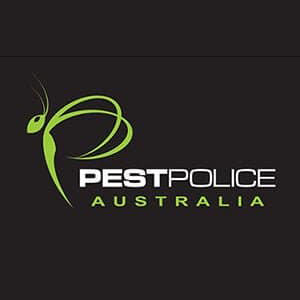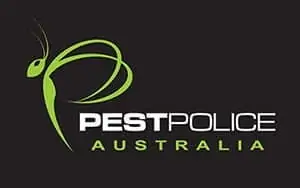If you grew up watching nature documentaries on Australian wildlife, you are aware that it dominates in terms of extremes. Therefore, assuming that the Australian cockroach will be larger and more frightening than most of its relatives worldwide makes sense.
In fact, it is comparable to the American cockroach in size and is as cautious of interacting with humans.
The Australian cockroach is less friendly despite having a brighter appearance than other species and prefers to stay outdoors. It might not take long for these cockroaches to enter your home or place of business if you’ve noticed them hanging around nearby.
Learn how to recognise the Australian cockroach in this article, as well as what it eats, where it lives, and how to keep it out of your home.
How to Identify Australian Cockroaches?
Australian cockroaches can grow to be between 1 and 1 1/2 inches long. They are frequently mistaken for American cockroaches due to their size and primarily brown appearance. However, they have visible yellow accents that set them apart from American roaches, especially the pale golden bands at the front margins of their wings.
In addition to a pair of cerci appendages, which both sexes have, the roach’s rear also includes a pair of microscopic appendages called styli that the male utilises during mating, making it possible to distinguish a male from a female.
Origin and Distribution of Australian Cockroaches
The origins of the Australian cockroach, Periplaneta australasiae, are not entirely consistent with its name, like many other cockroach species. It most likely began in Africa, then on board ships carrying merchandise around the world, it made its way to Australia and other places.
Australian cockroaches are becoming a major problem all over the world, especially in the southern United States, where it is always warmer.
The Life Cycle of Australian Cockroaches
Australian cockroaches take roughly a year to develop from an egg to an adult. An adult cockroach lives for 4 to 6 months on average.
Females deposit egg cases with about 24 eggs apiece in protected settings and on materials like damp wood. The female will conceal the tiny egg cases out of sight when it’s time for the eggs to hatch. Cockroach eggs (or even nymphs) are not likely to be found very frequently because the creatures are so cautious at these stages.
As they mature, nymphs (baby cockroaches) moult multiple times, eventually growing wings but first acquiring blotchy yellow patches down their backs. Nymphs mature into adults and start hatching their own eggs around 6 to 12 months. The Australian cockroach lives for 4-6 months as an adult.
Habitat and Diet of Australian Cockroaches
The Australian cockroach is a colonial-dwelling outdoor species. When it becomes too chilly outside, these critters frequently relocate indoors since they need warm environments to survive. They typically live in moist areas like the bark of trees and piles of wood or leaves.
Australian roaches can also be found indoors, in sinks, bathtubs, cabinets, drains, and water pipes near food and water sources. Unfortunately, your kitchen is a prime area for colonisation because it is so close to a food source. Large constructions such as malls, retail complexes, apartment buildings, and shopping centres are also susceptible to infestation by Australian cockroaches.
Are Australian Cockroaches Dangerous?
They might appear a bit less repulsive than other cockroaches due to their golden markings. But if they break into your house, don’t let their appearance fool you; they aren’t welcome visitors.
Despite being less of an immediate threat than more common indoor species, outdoor cockroaches are still troublesome pests to manage. They consume rubbish, faeces, and other nasty materials. Additionally, they reside in various unpleasant environments and are constantly exposed to microorganisms.
They won’t wipe their feet, bringing that bacteria into your kitchen countertops, dirty dishes, and leftover food. Any food they consumed or cooking surface they came in contact with should be considered contaminated.
Australian cockroaches may carry salmonella and other infections. You definitely don’t want a colony of these pests to start up in your house after they discover how delicious your food is. Additionally, they can damage plants if chilly temperatures drive them into a small area, such as a greenhouse.
Cockroaches also create allergens, which are unpleasant enough besides the fact that they spread bacteria. Some humans, especially those with asthma, may react to their shed skins and droppings. Some signs of a cockroach allergy include sneezing, skin irritation, and breathing difficulties.
Where Will I Find Australian Cockroaches on My Property?
Aussie roaches do get inside buildings. If you discover signs of indoor cockroach activity, you’ll generally find them in the bathroom or kitchen. However, it can be challenging to determine the species based on droppings or a quick glance at a running roach. To recognise an Australian roach, pay particular attention to its yellow patterns.
Since they are an outdoor species, your garden or the trees and shrubs near your home are the most likely places to find them. They move to other locations because of their requirement for humid environments. A colony could reside beneath your pool deck or near your hot tub.
It may be an Australian cockroach that has crawled up from the drain if you discover a huge roach in your bathtub. That can indicate that there is more moving through the water lines. Roaches may be drawn to the moist environment of the cabinet below by a leaking sink pipe.
How to Get Rid of Australian Cockroaches?
It takes effort, patience, and a combination of chemical and non-chemical treatments to get rid of Australian cockroaches. Australian roaches, like other pests, depend on food, water, and shelter to survive. The roach population will either perish or be driven to relocate if you can get rid of any one of these issues, especially with good sanitation. Their harborages should be the focus of control because they spend a lot of time there.
Australian Cockroaches prefer to live outdoors, but if they can get inside your homes, they won’t have any trouble settling down. In order to physically prevent Australian cockroaches or at least make it more difficult for them to enter, one can seal cracks. This is helpful because the cockroach population is inversely correlated with the number of available shelters.
You can reduce the number of roach dwellings by sealing gaps and crevices, mending damaged screens, and plugging holes around pipes and other fixtures with copper mesh or other appropriate materials. Due to the increased mortality risk associated with extended contact with treated surfaces, chemical treatments into cracks and crevices are also beneficial.
The need for proper sanitation and hygiene forces cockroaches to go farther in search of food and water, increasing the likelihood that they will come into touch with treated surfaces outside of potential breeding areas. By keeping food in containers that are well sealed, following excellent hygiene, vacuuming frequently, and removing stagnant water wherever possible, you can eliminate Australian cockroaches’ access to food and water.
How to Prevent Australian Cockroach Infestation?
Speaking of defence, if you want to keep Australian cockroaches out of your home or place of business, you must examine your habits and admit any potential weak points. We’ve all left food out overnight or occasionally put off vacuuming longer than we’d like.
One of the most effective strategies to get rid of Australian cockroaches is to clean your home regularly since it eliminates their food sources. Sealing pet food and pantry products in glass or plastic containers is crucial. Although roaches are resilient pests and exceptional survivors, they still need to eat.
Additionally, keep in mind that Australian cockroaches require moisture. Standing water is produced by leaking faucets and pipes, which raises humidity. Keeping your home dry and well-ventilated is an important element of cockroach prevention.
Additionally, you should routinely inspect your home for any gaps and openings that could let cockroaches and other external pests inside. This includes your garage and shed, where these pests could conceal themselves in boxes and unintentionally enter your home.
Prevent Cockroach Infestation with Pest Police
Australian cockroaches stand out from other roach species thanks to their distinctive appearance. They have something in common with their relatives in that you don’t want them around your home or place of business. You may put up a strong defence against Australian cockroaches and maintain your pest-free lifestyle by paying attention to the advice given above and being vigilant.
You can also seek help from pest control Melbourne professionals to effectively prevent a cockroach infestation in your home. The professional inspections carried out by the licenced Pest Police team conform to Australia’s latest pest management systems. The cockroach extermination procedures we use are always tailored to the pest, completely safe for humans and pets, and 100% environmentally friendly. For pest management in the Melbourne area, contact us at 1800 737 876 today. Our expert technicians will be waiting and happy to assist you with all your pest control needs!

